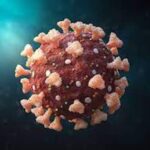Health sector policy making is extremely challenging and complex. The backdrop for policy formulation are low public spending and high out of pocket expenditures. The out of pocket expenditure on health care as a proportion of total household monthly per capita expenditure was 6.9 percent in rural areas and 5.5 percent in urban areas. Depsite India providing free care in public hospitals for maternity, new born and infant care, the burden of out of pocket expenditures remains quite high. The major policy direction is to enhance public health expenditure to 2.5% of GDP (from the present low level of ~1%) in 5 years.
The 2017 Union Budget estimates for health show an appreciable increase of more than 27%, from Rs. 37061.55 cr in 2016-17, the budget estimate for 2017-18 has been increased to Rs. 47352.51 cr. Further the Government has prepared an action plan to eliminate Kala-Azar and Filariasis by 2017; to eliminate Leprosy by 2018, Measles by 2020 and to eliminate Tuberculosis by 2025.
The sustainable development goals envisage that the global maternal mortality ratio will be reduced to 70 per 100,000 live births. From a baseline of 560 in 1990, the Nation has achieved an MMR of 167 in 2011. From a baseline of 126 in 1990, the Nation has achieved an U5MR of 39 in 2014. In the run up to the 2017 Union Budget, Government has formulated an action plan to reduce IMR from 39 in 2014 to 28 by 2019, and MMR 167 in 2011 to 100 by 2020. The challenges remain in the six large States of Bihar, Uttar Pradesh, Rajasthan, Madhya Pradesh, Jharkhand and Chattisgarh which account for 42 percent of national population and 56 percent of annual population increase.
India has developed a vast organization for public health care delivery and Primary care services. Infrastructure and Human Resource Development in Primary and Secondary Care Hospitals has been a key priority area. The 2017 Union Budget seeks to upgrade 1.5 lakh health sub-centres to health wellness centers and introduce a nationwide scheme for pregnant women under which Rs. 6000/- for each case will be transferred. These steps represent significant additions to the ongoing schemes for provision of free dugs, free diagnostics and free emergency care services and free transport system for the people. A well-functioning primary health system reduces the burden on high cost secondary/ tertiary care facilities and the 2017 Union Budget takes substantial steps in this direction.
AIIMS is a national and global brand – built on more than six decades of evolution and performance of our Institute. It is the bench mark for other centres of excellence in healthcare and academics, and a fountainhead of best practices in education, research and clinical standards. The unique status of AIIMSs has been reinforced in the 2017 Union Budget by significant infusion of financial resources for major expansion. India’s Apex Medical Sciences University has enabled us to address one of the great weaknesses of Indian society – the iniquitous utilization of modern health services. High out of pocket expenses on chronic conditions can push millions of people below the poverty line.
The Government has placed a lot of emphasis on creation of several AIIMS like Institutions across India. The 2017 Union Budget has proposed establishment of 2 new AIIMS in Jharkhand and Gujarat. This would provide a huge boost to tertiary care services in public sector. Additional resource allocations for primary, secondary and tertiary care sectors lays down a roadmap for India’s path to achievement of sustainable development goals. The replication of AIIMS is quite complex because of the high-end clinical services that it encompasses. It has been a challenge to get competent faculty especially at the senior level and to retain it. Infrastructure delays have affected the utilization.
Human resources represent a vital component of India’s health care. The 2017 Union Budget seeks to create 5000 Post Graduate seats per annum to ensure adequate availability of specialist doctors to strengthen secondary and tertiary levels of healthcare. The Union Government has indicated its commitment to take necessary steps for structural transformation of the Regulatory framework of Medical Education and Practice in India. The increased availability of PG seats along with a centralized entrance exam represent major steps in reform of medical education in the country. The expansion of postgraduate medical education is a priority as the shortage of PG medical seats in the country affects not only the availability of specialist doctors but also the ease of getting faculty for medical colleges.
The collaboration between Medical Colleges and Medical Research is being firmly established. India has 32 publically funded Department of Health Research institutions. The emphasis is on evidence for policy, medical product innovation and basic research; operations research; drug discovery; frugal innovation; antimicrobial resistance; partnerships for research; and creation of databases.
The Health for All policy that the Nation had envisaged in the mid 1970s, continues be relevant to this day.
……
V.Srinivas(Author) is a senior civil servant, an IAS officer of 1989 batch, presently serving as Deputy Director Administration, AIIMS New Delhi.








I discovered your blog site on google and check a few of your early posts. Continue to keep up the very good operate. I just additional up your RSS feed to my MSN News Reader. Seeking forward to reading more from you later on!…
http://www.corburterilio.com/
I will immediately clutch your rss as I can’t find your e-mail subscription hyperlink or e-newsletter service. Do you’ve any? Kindly permit me know in order that I may just subscribe. Thanks.
http://www.borvestinkral.com/
I’m impressed, I must say. Really rarely do I encounter a blog that’s each educative and entertaining, and let me inform you, you could have hit the nail on the head. Your concept is excellent; the problem is something that not enough people are talking intelligently about. I’m very completely satisfied that I stumbled across this in my search for one thing regarding this.
http://www.borvestinkral.com/